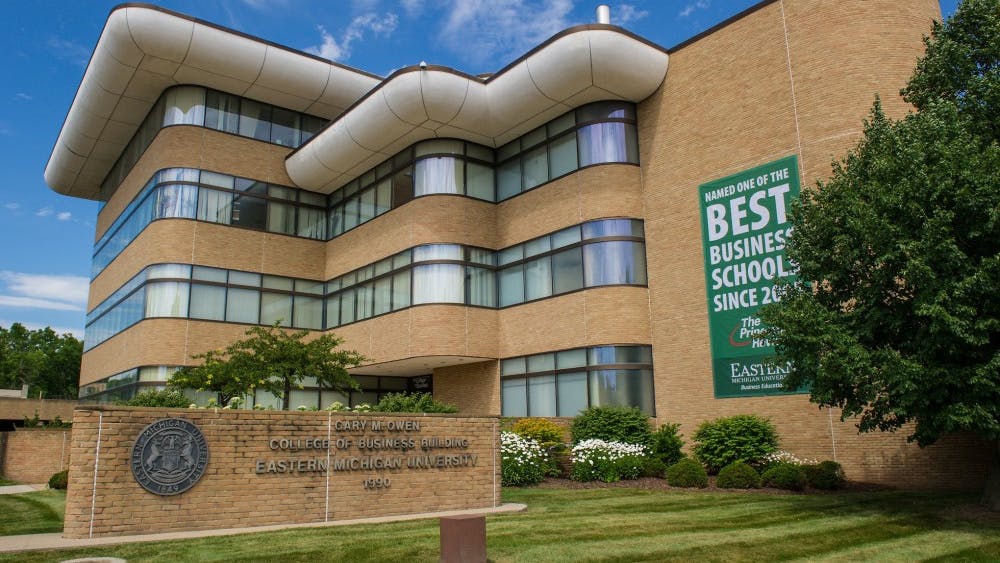It’s official: Eastern Michigan University has shifted fully online for the remainder of the winter semester. Emails from the office of the president encourage residents in EMU dorms and apartments to return to their permanent residences, some of those being in majority rural or semi-rural areas.
With the shift to online learning, it is astronomically important that students have a reliable internet connection, and there are several services from Spectrum and Comcast which grant free high-speed internet to students in need. While boasting that these services are available nationwide, it goes unmentioned that high-speed internet still relies on important broadband infrastructure, which is lacking in rural areas like my hometown of Coldwater, Ohio.
Some services rely on hotspots (not available in many areas in Michigan, the Midwest, and the nation at large), while some require several days to mail a router to your place of residence (though the mailing fee is waived). Something, again, which goes unmentioned is that hooking up a router to an unreliable wired connection doesn’t do much better in providing much-needed high-speed internet.
The expansion of broadband is an important push, while the definition of broadband changes as technology improves. Currently the FCC defines broadband as “internet service with speeds of at least 25 Mbps download and 3 Mbps upload (25/3 Mbps).” The map below from nonprofit advocacy group Connected Nation shows the availability of such high-speed internet in Michigan. While many areas have seen advancement in lower-speed broadband (10/1 Mbps), they are still behind in delivering true broadband speed and connectivity. It is also important to note that this map is for fixed, not mobile, service.

Broadband as a service, in my opinion, is comparable to other basic services people need, and I believe this crisis highlights that. The crisis has predictably renewed calls for more broadband internet access in rural areas, a bipartisan push I put my full support behind. Students from rural areas deserve to have the capability and technology to do their work from home.
This is not to say that urban families aren’t struggling with their internet, as well, but the Federal Communications Commission compiled data which shows that 26.4% of rural Americans lack access to broadband compared to only 1% of urban Americans. Broadband connections better allow the free services provided by the tech companies to deliver what they promise, and these figures show a divide in access and availability.
The importance of broadband is also shown in rural hospitals, which are beginning to rely on telemedicine to connect to specialists, especially if cases of COVID-19 arise in their hospitals. Telemedicine relies on a steady broadband internet connection to get the guidance necessary to diagnose and treat vulnerable patients.
There have been many pushes by Congress to expand and enhance rural broadband, most notably the DATA Act of the current 2019-2020 Congress, a bipartisan piece of legislation which requires the FCC to change how they collect, disseminate, and verify broadband data. Having accurate maps is the first step to bringing needed funding for broadband access to communities in need. While some legislators have concerns about how the federal funds interact with state-level pushes for broadband access (those receiving state funds would be exempt from the federal funds), the push for accurate mapping is of great importance in finding the truly most vulnerable areas (those without state-level investment). Still, it is important for the commission to incentivize states to develop their own broadband programs, so I agree with Senators about those concerns.
2020 presidential hopefuls (current and former) also have/had their own broadband plans, from the “public option for broadband” proposals by Sanders and Warren which concentrate control in public entities to Buttigieg and Biden’s investment toward broadband in local communities the private sector isn’t serving (in grant amounts ranging from $20-80 million). Others had more vague plans for expanding broadband access. All candidates supported letting localities build their own broadband networks, regardless of how their plans differ in scale and governmental control.
In Michigan, specifically, the Rural Broadband Policy Group submitted the Michigan Broadband Roadmap to former Gov. Rick Snyder in 2018, one of its goals bringing fixed 25/3 Mbps broadband service to all localities by 2022 and one of its recommendations being to concentrate funding in the areas currently unserved by broadband at 10/1 Mbps. They also offered snapshots of where Michigan stands nationally in the following figures and maps.
Michigan ranks 30th among other states and territories for broadband availability.
An estimated 368,000 rural Michigan households do not have access to broadband.
Nearly 2 million Michigan households (48%) have access to only one fixed, terrestrial internet service provider.
Just over $2.5 billion in potential economic benefit is left unrealized among disconnected households.
-
One-third of households that do not subscribe to the internet say the cost of service is too expensive.
I believe we are past the point of assessment, and it’s time to designate funding and physical construction of better fiber, DSL, and fixed wireless services for rural Michiganders and rural communities nationwide. States should be given incentive to include broadband in their infrastructure plans, as Gov. Whitmer has. Further, it should remain an important bipartisan issue to increase its potential for advancement in a gridlocked legislature and its potential to increase blue collar employment in the construction of this important infrastructure.
While the COVID-19 crisis has brought a magnifying glass to the unavailability of high-speed internet for those most in need, efforts during and following the crisis have great potential to make remote work and human connection (through high-speed-internet-dependent communication tools like Facebook, Facetime, and Skype) better for Americans who need that close virtual contact with friends and family for their mental health.











